


Researchers of the National Conservation and Research Center for Milu collect samples at Milu Park in Beijing, capital of China, Aug. 18, 2025.
A series of activities was held at Milu Park to celebrate the 40th anniversary of the reintroduction of milu deer to China on Sunday.
Milu deer, also known as Pere David's deer, are endemic to China where they bear the nickname "sibuxiang," or "like none of the four" due to their unique features -- a horse's face, a donkey's tail, cow-like hooves and a stag's antlers.
Wild milu deer were once extinct in China and introduced to China from overseas since 1985. The species is now under first-class state protection in the country. After 40 years of unremitting efforts, China has reestablished their wild populations and witnessed a growing population of artificially-bred Milu deer. (Xinhua/Zhang Chenlin)
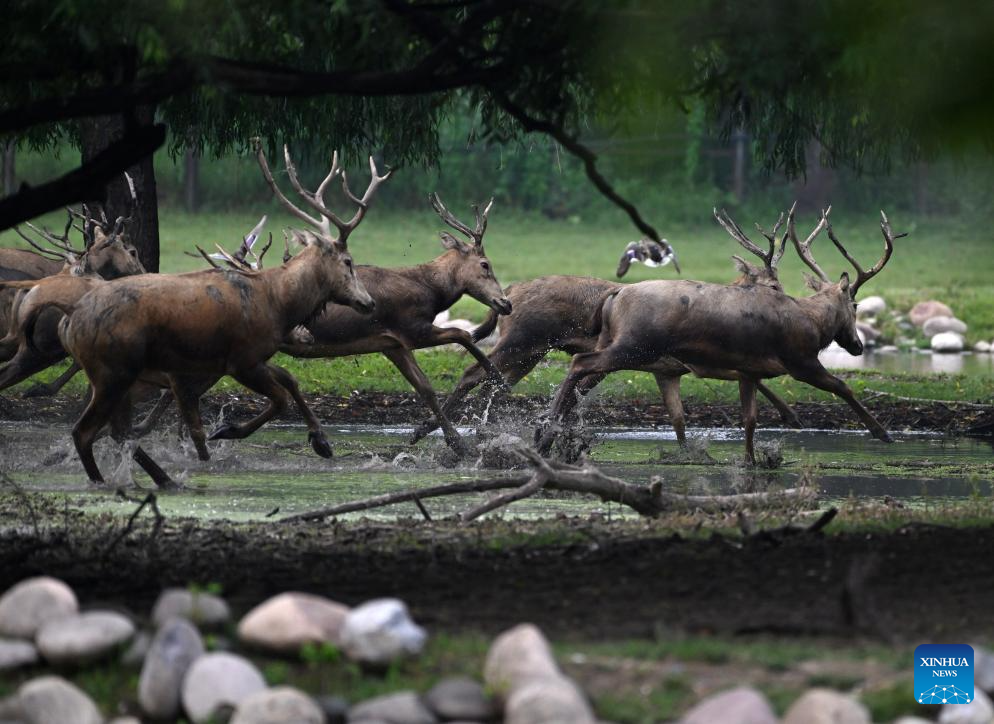
Milu deer are pictured at Milu Park in Beijing, capital of China, Aug. 18, 2025.
A series of activities was held at Milu Park to celebrate the 40th anniversary of the reintroduction of milu deer to China on Sunday.
Milu deer, also known as Pere David's deer, are endemic to China where they bear the nickname "sibuxiang," or "like none of the four" due to their unique features -- a horse's face, a donkey's tail, cow-like hooves and a stag's antlers.
Wild milu deer were once extinct in China and introduced to China from overseas since 1985. The species is now under first-class state protection in the country. After 40 years of unremitting efforts, China has reestablished their wild populations and witnessed a growing population of artificially-bred Milu deer. (Xinhua/Zhang Chenlin)
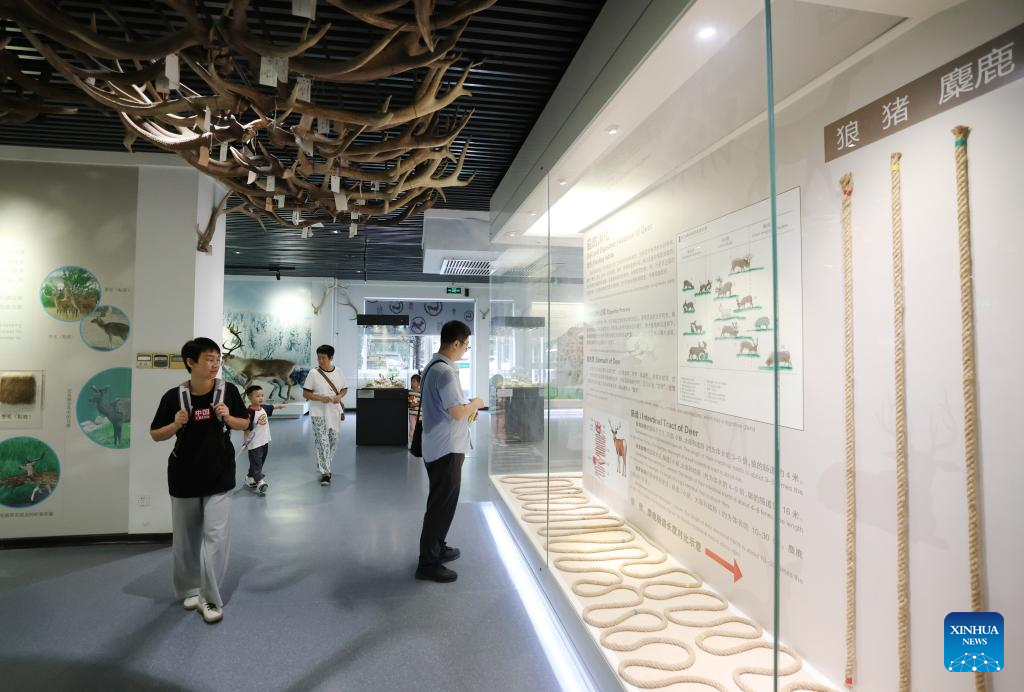
People visit a museum of Milu Park in Beijing, capital of China, Aug. 24, 2025.
A series of activities was held at Milu Park to celebrate the 40th anniversary of the reintroduction of milu deer to China on Sunday.
Milu deer, also known as Pere David's deer, are endemic to China where they bear the nickname "sibuxiang," or "like none of the four" due to their unique features -- a horse's face, a donkey's tail, cow-like hooves and a stag's antlers.
Wild milu deer were once extinct in China and introduced to China from overseas since 1985. The species is now under first-class state protection in the country. After 40 years of unremitting efforts, China has reestablished their wild populations and witnessed a growing population of artificially-bred Milu deer. (Xinhua/Zhang Chenlin)
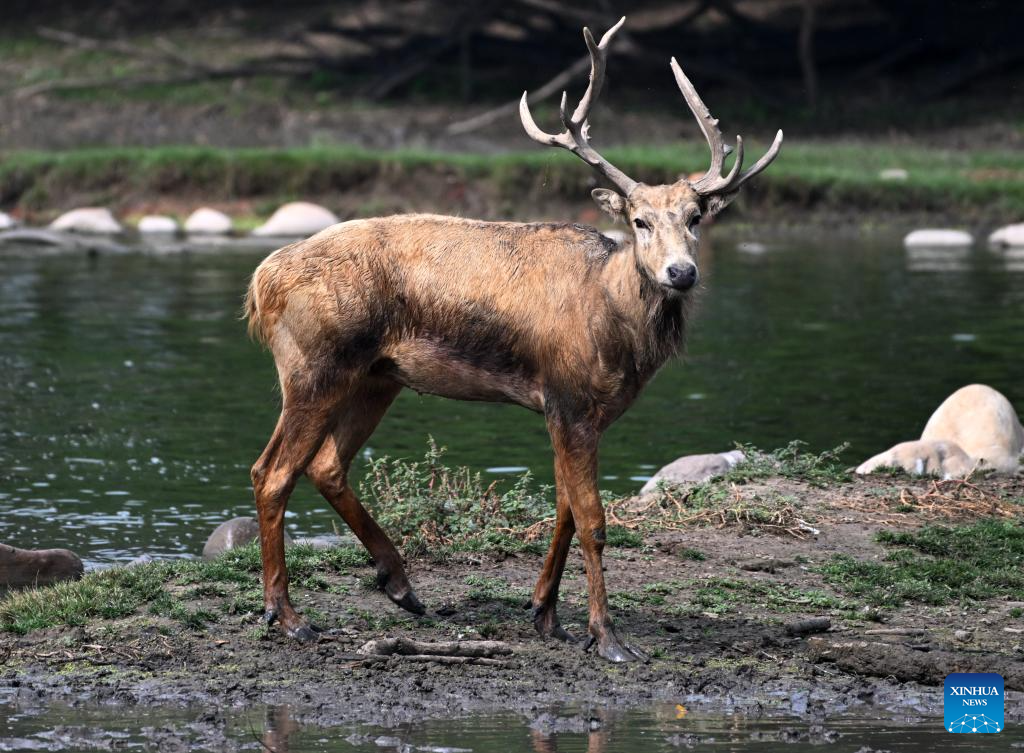
A milu deer is pictured at Milu Park in Beijing, capital of China, Aug. 18, 2025.
A series of activities was held at Milu Park to celebrate the 40th anniversary of the reintroduction of milu deer to China on Sunday.
Milu deer, also known as Pere David's deer, are endemic to China where they bear the nickname "sibuxiang," or "like none of the four" due to their unique features -- a horse's face, a donkey's tail, cow-like hooves and a stag's antlers.
Wild milu deer were once extinct in China and introduced to China from overseas since 1985. The species is now under first-class state protection in the country. After 40 years of unremitting efforts, China has reestablished their wild populations and witnessed a growing population of artificially-bred Milu deer. (Xinhua/Zhang Chenlin)

Milu Park holds activities to celebrate the 40th anniversary of the reintroduction of milu deer to China in Beijing, capital of China, Aug. 24, 2025.
A series of activities was held at Milu Park to celebrate the 40th anniversary of the reintroduction of milu deer to China on Sunday.
Milu deer, also known as Pere David's deer, are endemic to China where they bear the nickname "sibuxiang," or "like none of the four" due to their unique features -- a horse's face, a donkey's tail, cow-like hooves and a stag's antlers.
Wild milu deer were once extinct in China and introduced to China from overseas since 1985. The species is now under first-class state protection in the country. After 40 years of unremitting efforts, China has reestablished their wild populations and witnessed a growing population of artificially-bred Milu deer. (Xinhua/Zhang Chenlin)
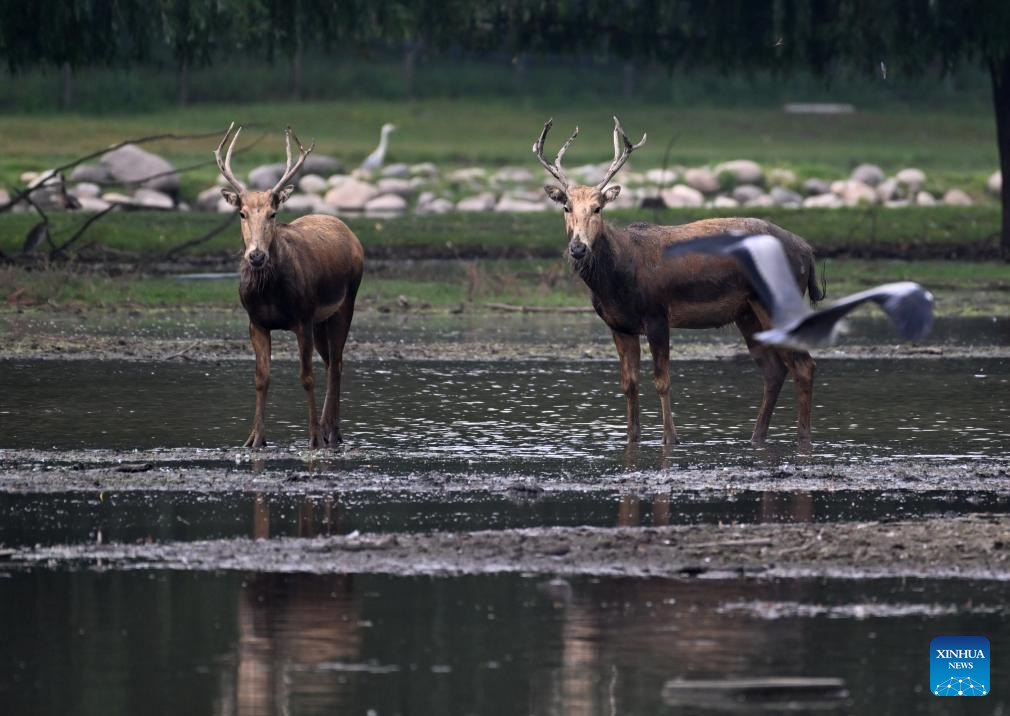
Milu deer are pictured at Milu Park in Beijing, capital of China, Aug. 18, 2025.
A series of activities was held at Milu Park to celebrate the 40th anniversary of the reintroduction of milu deer to China on Sunday.
Milu deer, also known as Pere David's deer, are endemic to China where they bear the nickname "sibuxiang," or "like none of the four" due to their unique features -- a horse's face, a donkey's tail, cow-like hooves and a stag's antlers.
Wild milu deer were once extinct in China and introduced to China from overseas since 1985. The species is now under first-class state protection in the country. After 40 years of unremitting efforts, China has reestablished their wild populations and witnessed a growing population of artificially-bred Milu deer. (Xinhua/Zhang Chenlin)
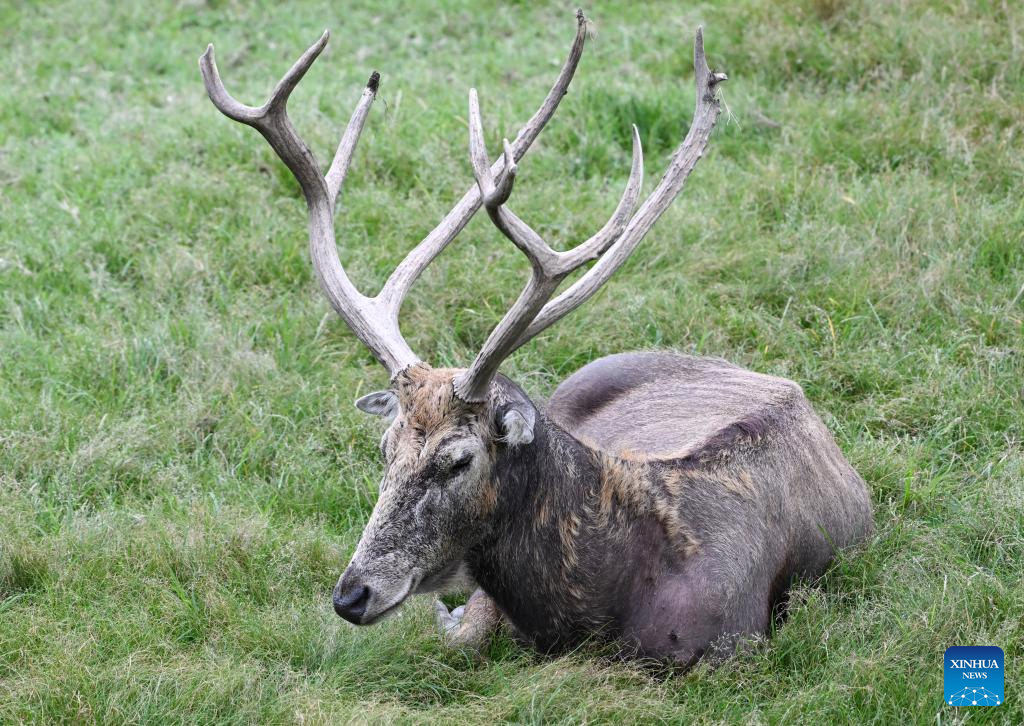
A milu deer is pictured at Milu Park in Beijing, capital of China, Aug. 24, 2025.
A series of activities was held at Milu Park to celebrate the 40th anniversary of the reintroduction of milu deer to China on Sunday.
Milu deer, also known as Pere David's deer, are endemic to China where they bear the nickname "sibuxiang," or "like none of the four" due to their unique features -- a horse's face, a donkey's tail, cow-like hooves and a stag's antlers.
Wild milu deer were once extinct in China and introduced to China from overseas since 1985. The species is now under first-class state protection in the country. After 40 years of unremitting efforts, China has reestablished their wild populations and witnessed a growing population of artificially-bred Milu deer. (Xinhua/Zhang Chenlin)
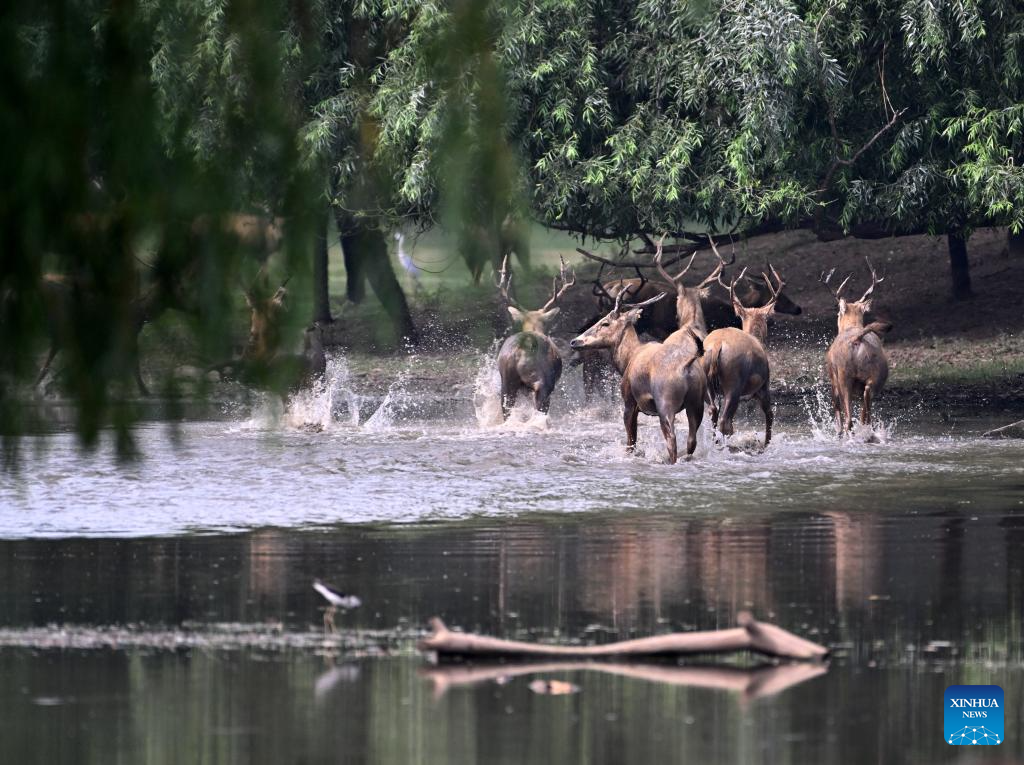
Milu deer are pictured at Milu Park in Beijing, capital of China, Aug. 18, 2025.
A series of activities was held at Milu Park to celebrate the 40th anniversary of the reintroduction of milu deer to China on Sunday.
Milu deer, also known as Pere David's deer, are endemic to China where they bear the nickname "sibuxiang," or "like none of the four" due to their unique features -- a horse's face, a donkey's tail, cow-like hooves and a stag's antlers.
Wild milu deer were once extinct in China and introduced to China from overseas since 1985. The species is now under first-class state protection in the country. After 40 years of unremitting efforts, China has reestablished their wild populations and witnessed a growing population of artificially-bred Milu deer. (Xinhua/Zhang Chenlin)
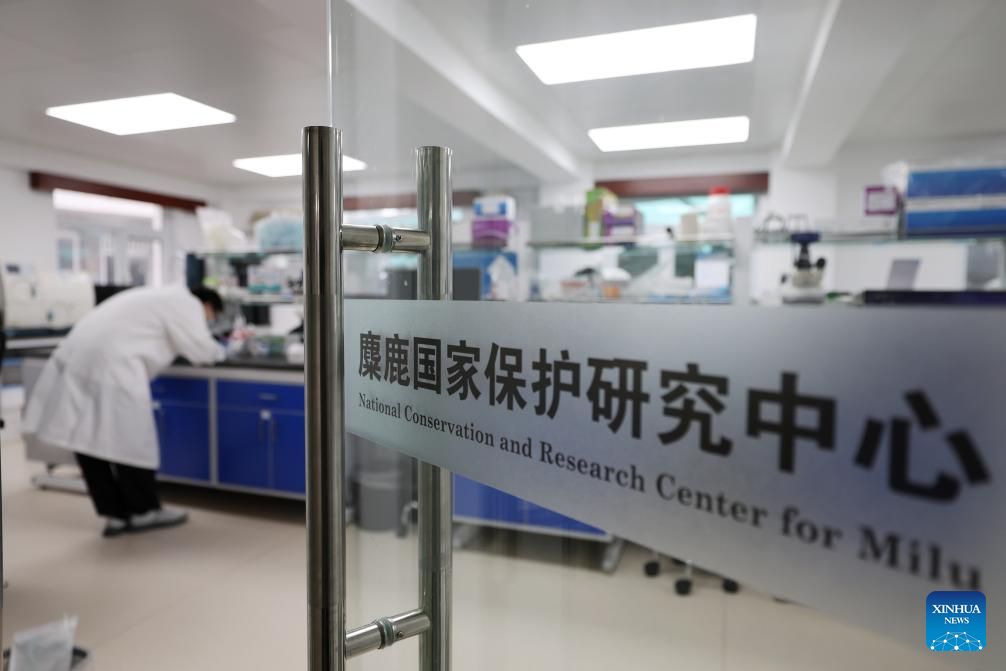
This photo taken on Aug. 18, 2025 shows the National Conservation and Research Center for Milu in Beijing, capital of China.
A series of activities was held at Milu Park to celebrate the 40th anniversary of the reintroduction of milu deer to China on Sunday.
Milu deer, also known as Pere David's deer, are endemic to China where they bear the nickname "sibuxiang," or "like none of the four" due to their unique features -- a horse's face, a donkey's tail, cow-like hooves and a stag's antlers.
Wild milu deer were once extinct in China and introduced to China from overseas since 1985. The species is now under first-class state protection in the country. After 40 years of unremitting efforts, China has reestablished their wild populations and witnessed a growing population of artificially-bred Milu deer. (Xinhua/Zhang Chenlin)

A researcher works at the National Conservation and Research Center for Milu, at Milu Park in Beijing, capital of China, Aug. 18, 2025.
A series of activities was held at Milu Park to celebrate the 40th anniversary of the reintroduction of milu deer to China on Sunday.
Milu deer, also known as Pere David's deer, are endemic to China where they bear the nickname "sibuxiang," or "like none of the four" due to their unique features -- a horse's face, a donkey's tail, cow-like hooves and a stag's antlers.
Wild milu deer were once extinct in China and introduced to China from overseas since 1985. The species is now under first-class state protection in the country. After 40 years of unremitting efforts, China has reestablished their wild populations and witnessed a growing population of artificially-bred Milu deer. (Xinhua/Zhang Chenlin)

People visit a museum of Milu Park in Beijing, capital of China, Aug. 24, 2025.
A series of activities was held at Milu Park to celebrate the 40th anniversary of the reintroduction of milu deer to China on Sunday.
Milu deer, also known as Pere David's deer, are endemic to China where they bear the nickname "sibuxiang," or "like none of the four" due to their unique features -- a horse's face, a donkey's tail, cow-like hooves and a stag's antlers.
Wild milu deer were once extinct in China and introduced to China from overseas since 1985. The species is now under first-class state protection in the country. After 40 years of unremitting efforts, China has reestablished their wild populations and witnessed a growing population of artificially-bred Milu deer. (Xinhua/Zhang Chenlin)
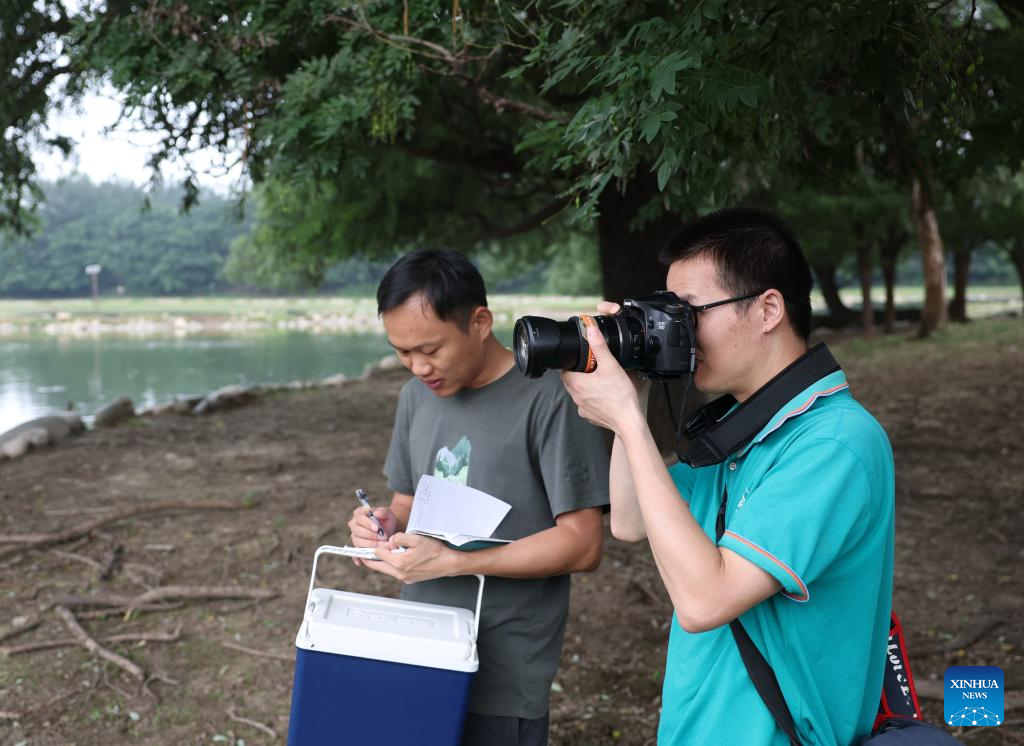
Researchers of the National Conservation and Research Center for Milu observe and take photos of milu deer at Milu Park in Beijing, capital of China, Aug. 18, 2025.
A series of activities was held at Milu Park to celebrate the 40th anniversary of the reintroduction of milu deer to China on Sunday.
Milu deer, also known as Pere David's deer, are endemic to China where they bear the nickname "sibuxiang," or "like none of the four" due to their unique features -- a horse's face, a donkey's tail, cow-like hooves and a stag's antlers.
Wild milu deer were once extinct in China and introduced to China from overseas since 1985. The species is now under first-class state protection in the country. After 40 years of unremitting efforts, China has reestablished their wild populations and witnessed a growing population of artificially-bred Milu deer. (Xinhua/Zhang Chenlin)

Milu deer are pictured at Milu Park in Beijing, capital of China, Aug. 24, 2025.
A series of activities was held at Milu Park to celebrate the 40th anniversary of the reintroduction of milu deer to China on Sunday.
Milu deer, also known as Pere David's deer, are endemic to China where they bear the nickname "sibuxiang," or "like none of the four" due to their unique features -- a horse's face, a donkey's tail, cow-like hooves and a stag's antlers.
Wild milu deer were once extinct in China and introduced to China from overseas since 1985. The species is now under first-class state protection in the country. After 40 years of unremitting efforts, China has reestablished their wild populations and witnessed a growing population of artificially-bred Milu deer. (Xinhua/Zhang Chenlin)
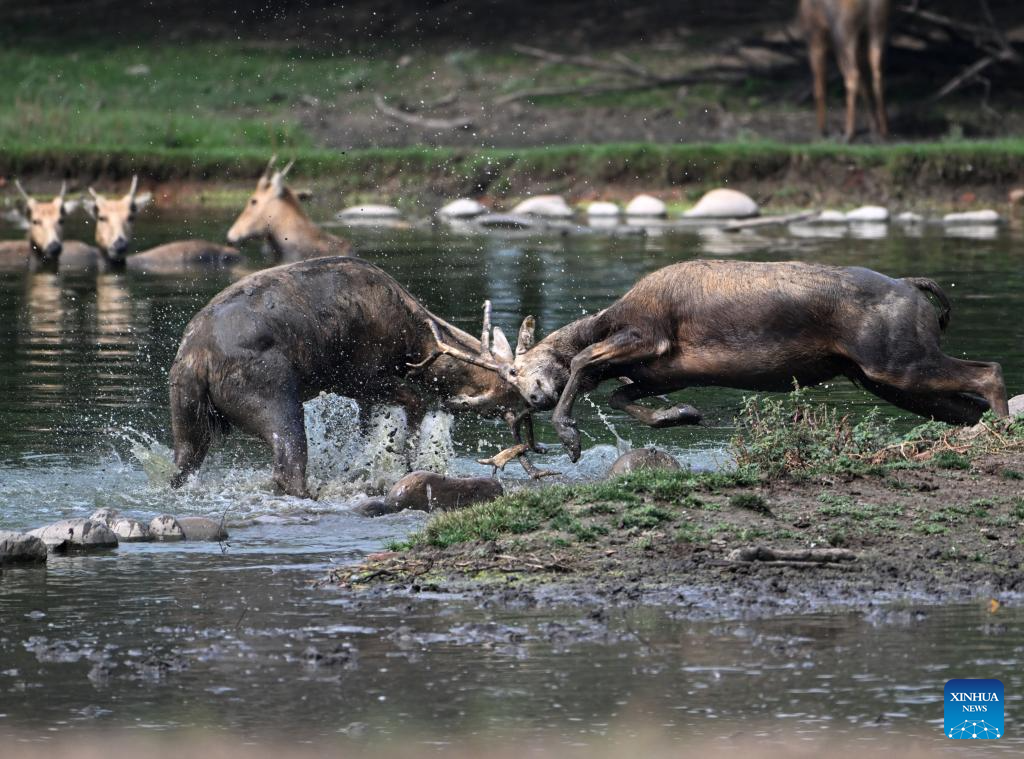
Milu deer are pictured at Milu Park in Beijing, capital of China, Aug. 18, 2025.
A series of activities was held at Milu Park to celebrate the 40th anniversary of the reintroduction of milu deer to China on Sunday.
Milu deer, also known as Pere David's deer, are endemic to China where they bear the nickname "sibuxiang," or "like none of the four" due to their unique features -- a horse's face, a donkey's tail, cow-like hooves and a stag's antlers.
Wild milu deer were once extinct in China and introduced to China from overseas since 1985. The species is now under first-class state protection in the country. After 40 years of unremitting efforts, China has reestablished their wild populations and witnessed a growing population of artificially-bred Milu deer. (Xinhua/Zhang Chenlin)

Lianyungang port welcomes largest group of S. Korean travelers under China's visa-free policy
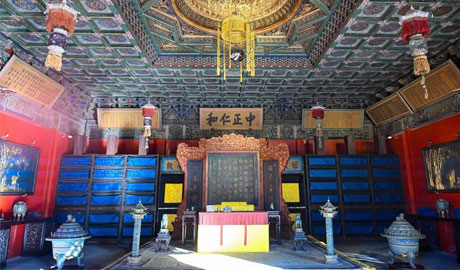
Hall of Mental Cultivation of the Palace Museum reopens to public

Wuyi rock pigment painting in China's Fujian infuses modern artistic elements into tradition

China-Serbia digital art exhibition explores time, space, heritage

点击右上角![]() 微信好友
微信好友
 朋友圈
朋友圈

请使用浏览器分享功能进行分享
